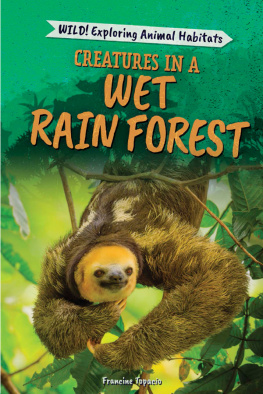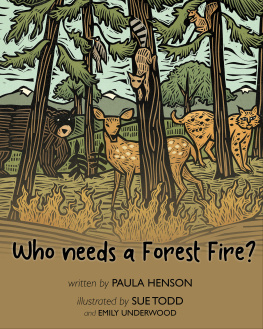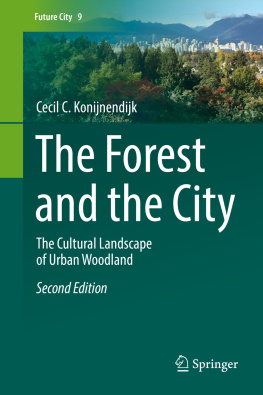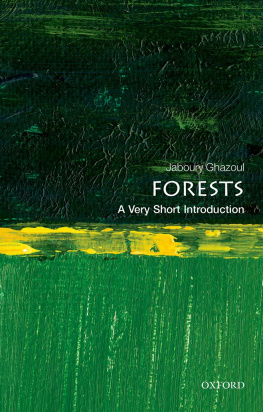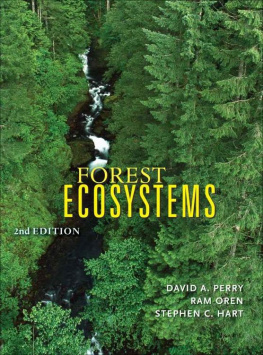
Table of Contents
List of Illustrations
- Preface
- Chapter 1
- Chapter 2
- Chapter 3
- Chapter 4
- Chapter 5
- Chapter 6
- Chapter 7
- Chapter 8
- Chapter 9
- Chapter 10
- Chapter 11
- Chapter 12
- Chapter 13
- Chapter 14
Guide
Pages
Forest Ecology
An EvidenceBased Approach
DAN BINKLEY
School of Forestry, Northern Arizona University

This edition first published 2021
2021 John Wiley & Sons Ltd
All rights reserved. No part of this publication may be reproduced, stored in a retrieval system, or transmitted, in any form or by any means, electronic, mechanical, photocopying, recording or otherwise, except as permitted by law. Advice on how to obtain permission to reuse material from this title is available at http://www.wiley.com/go/permissions.
The right of Dan Binkley to be identified as the author of this work has been asserted in accordance with law.
Registered Offices
John Wiley & Sons, Inc., 111 River Street, Hoboken, NJ 07030, USA
John Wiley & Sons Ltd, The Atrium, Southern Gate, Chichester, West Sussex, PO19 8SQ, UK
Editorial Office
9600 Garsington Road, Oxford, OX4 2DQ, UK
For details of our global editorial offices, customer services, and more information about Wiley products visit us at www.wiley.com.
Wiley also publishes its books in a variety of electronic formats and by printondemand. Some content that appears in standard print versions of this book may not be available in other formats.
Limit of Liability/Disclaimer of Warranty
The contents of this work are intended to further general scientific research, understanding, and discussion only and are not intended and should not be relied upon as recommending or promoting scientific method, diagnosis, or treatment by physicians for any particular patient. In view of ongoing research, equipment modifications, changes in governmental regulations, and the constant flow of information relating to the use of medicines, equipment, and devices, the reader is urged to review and evaluate the information provided in the package insert or instructions for each medicine, equipment, or device for, among other things, any changes in the instructions or indication of usage and for added warnings and precautions. While the publisher and authors have used their best efforts in preparing this work, they make no representations or warranties with respect to the accuracy or completeness of the contents of this work and specifically disclaim all warranties, including without limitation any implied warranties of merchantability or fitness for a particular purpose. No warranty may be created or extended by sales representatives, written sales materials or promotional statements for this work. The fact that an organization, website, or product is referred to in this work as a citation and/or potential source of further information does not mean that the publisher and authors endorse the information or services the organization, website, or product may provide or recommendations it may make. This work is sold with the understanding that the publisher is not engaged in rendering professional services. The advice and strategies contained herein may not be suitable for your situation. You should consult with a specialist where appropriate. Further, readers should be aware that websites listed in this work may have changed or disappeared between when this work was written and when it is read. Neither the publisher nor authors shall be liable for any loss of profit or any other commercial damages, including but not limited to special, incidental, consequential, or other damages.
Library of Congress CataloginginPublication Data
Names: Binkley, Dan, author. | John Wiley & Sons, publisher.
Title: Forest ecology : an evidencebased approach / Dan Binkley, School of Forestry, Northern Arizona University.
Description: First edition. | Hoboken, NJ : WileyBlackwell, 2021. | Includes index.
Identifiers: LCCN 2021001373 (print) | LCCN 2021001374 (ebook) | ISBN 9781119703204 (paperback) | ISBN 9781119704409 (adobe pdf) | ISBN 9781119704416 (epub)
Subjects: LCSH: Forest ecology.
Classification: LCC QH541.5.F6 B555 2021 (print) | LCC QH541.5.F6 (ebook) | DDC 577.3dc23
LC record available at https://lccn.loc.gov/2021001373
LC ebook record available at https://lccn.loc.gov/2021001374
Cover Design: Wiley
Cover Image: Dan Binkley
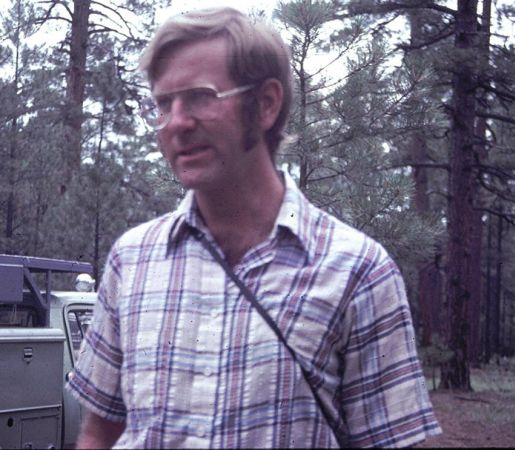
The development of forests always includes contingent events: if an event happens, such as a fire, windstorm, or insect outbreak, the future of the forest will unfold differently than if the event did not happen (or if it happened in some other way at another time). This book would not be in front of you without the contingent event of Wally showing up as a young professor when I was an undergraduate at the School of Forestry at Northern Arizona University. Wally's engaging curiosity, interest in students, and active research program pulled my interests and future path into the domain of forest ecology. He continued to be a mentor through my grad student days at other universities, and most recently he led us through establishing the Colorado Forest Restoration Institute (modeled on NAU's Ecological Restoration Institute). It's been a good path.
Thanks Wally.
Dan Binkley
Fort Collins, Colorado
Preface
How Do We Come to Understand Forests?
This book supports learning about forest ecology. A good place to start is with a few points about knowledge, followed by a framework on how to approach forest ecology, some key features of using graphs to interpret information, and finally coming around to how to think about questions and answers in forests.
Humans try to understand complex worlds through a range of perspectives. Art tries to capture some essential features of a complex world, emphasizing how parts interact to form wholes. Religions explain how worlds work now, how the worlds came to be, and what will come next. Both art and religion develop from ideas and concepts, originated by individual artists or passed down by religious societies. How do we know if a work of art or an idea in religion represents the real world accurately? This question generally isnt important. Art that satisfies the artist is good art, and religions are accepted on faith.
Art and religion have been evolving for more than 100000 years, and lands and forests have been part of that development. One of the first written stories is a religious one from the Epic of Gilgamesh, from more than 4000years ago from the Mesopotamian city of Uruk (now within Iraq). Gilgamesh and a companion traveled to the distant, sacred Cedar Mountain to cut trees. Lines from the epic poem include (based on AlRawi and George ):
They stood there marveling at the forest, observing the height of the cedars They were gazing at the Cedar Mountain, dwelling of gods, sweet was its shade, full of delight. All tangled was the thorny undergrowth, the forest a thick canopy, cedars so entangled it had no ways in. For one league on all sides cedars sent forth saplings, cypresses for twothirds of a league. Through all the forest a bird began to sing answering one another, a constant din was the noise. A solitary treecricket set off a noisy chorus. A wood pigeon was moaning, a turtle dove calling in answer. At the call of the stork, the forest exults. At the cry of the francolin bird, the forest exults in plenty. Monkey mothers sing aloud, a youngster monkey shrieks like a band of musicians and drummers, daily they bash out a rhythm
Next page

